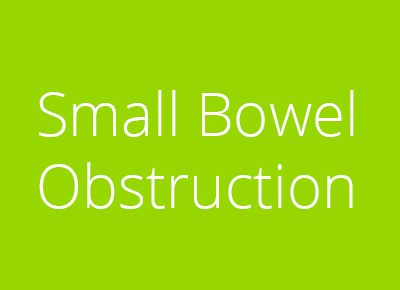What is it?
- A small bowel obstruction is a blockage in the small intestine. Common causes include: scar tissue from prior surgeries, hernias, or cancer.
- In severe cases, blood supply to the area of the obstruction may become compromised and the bowel tissue may die. This is a life threatening situation.
What are the symptoms?
- Common symptoms include, nausea and vomiting of dark green bile, abdominal distension, cramping, abdominal discomfort, and obstipation (unable to pass gas or have a bowel movement)
How is it diagnosed?
- To confirm a diagnosis of bowel obstruction, an abdominal X-ray is often ordered. However, some intestinal obstructions can’t be seen using standard X-rays. An additional X-ray may be ordered that uses contrast material.
How is it treated?
- Most obstructions resolve by allowing the small bowel to rest. This is accomplished by inserting a nasogastric tube (NG tube: a thin plastic tube that goes through the nostril and into the stomach) that suctions fluid from the stomach.
- In addition, patients are not allowed to eat of drink during this time and are given intravenous fluids for hydration
- Usually, small bowel obstructions resolve within a few days.
Are there any complications?
- If left untreated, intestinal obstruction can cause serious life-threatening complications which include:
- Tissue death (ischemia): Intestinal obstruction can cut off the blood supply to part of your interesting which can cause the intestinal wall to die Tissue death can result in a tear (perforation) in the intestinal wall, which can lead to infection.
- Infection: Peritonitis is a medical term for infection in the abdominal cavity. It’s a life threatening condition that requires immediate medical and often surgical attention.
